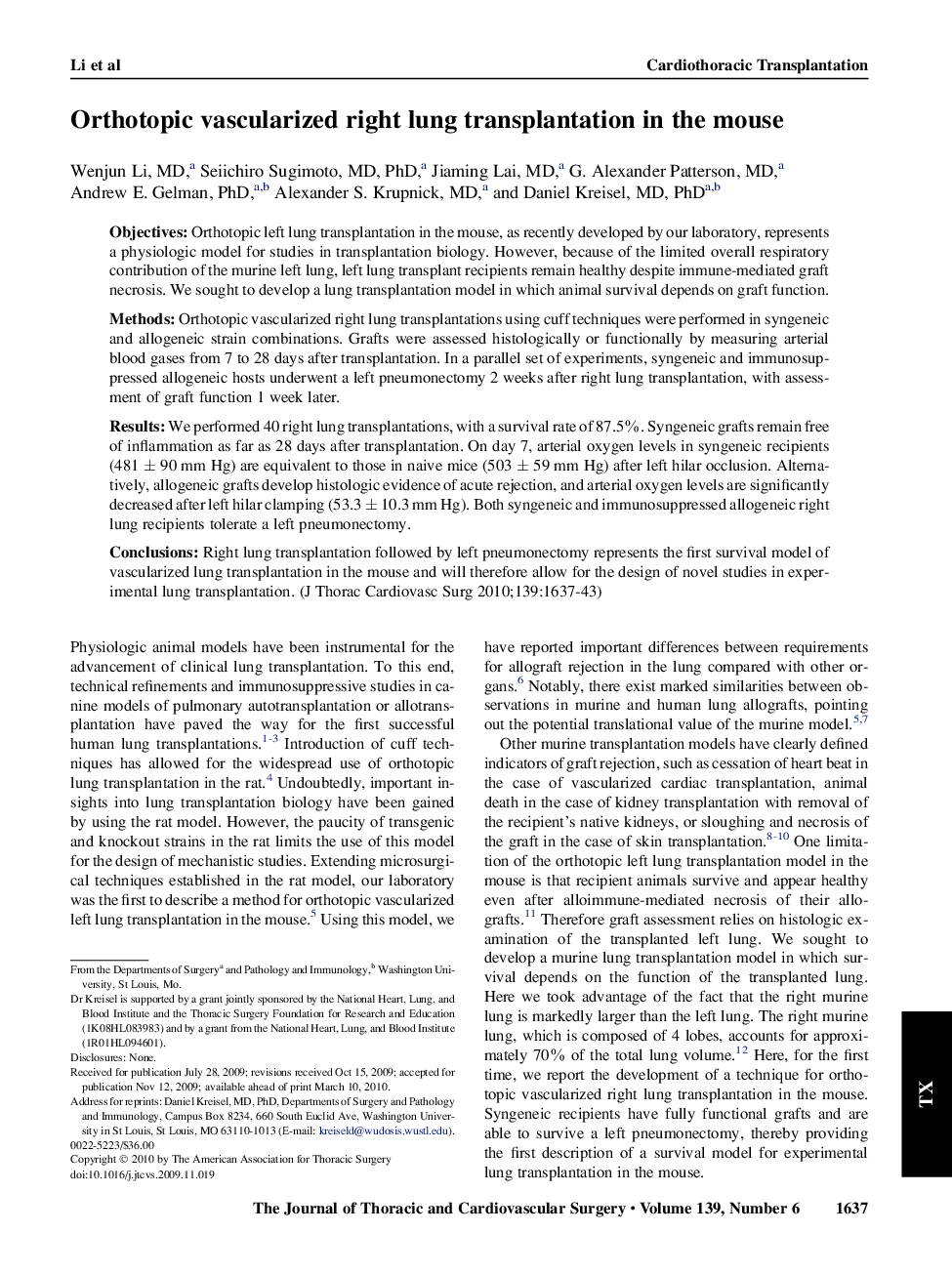| کد مقاله | کد نشریه | سال انتشار | مقاله انگلیسی | نسخه تمام متن |
|---|---|---|---|---|
| 2984111 | 1578661 | 2010 | 7 صفحه PDF | دانلود رایگان |

ObjectivesOrthotopic left lung transplantation in the mouse, as recently developed by our laboratory, represents a physiologic model for studies in transplantation biology. However, because of the limited overall respiratory contribution of the murine left lung, left lung transplant recipients remain healthy despite immune-mediated graft necrosis. We sought to develop a lung transplantation model in which animal survival depends on graft function.MethodsOrthotopic vascularized right lung transplantations using cuff techniques were performed in syngeneic and allogeneic strain combinations. Grafts were assessed histologically or functionally by measuring arterial blood gases from 7 to 28 days after transplantation. In a parallel set of experiments, syngeneic and immunosuppressed allogeneic hosts underwent a left pneumonectomy 2 weeks after right lung transplantation, with assessment of graft function 1 week later.ResultsWe performed 40 right lung transplantations, with a survival rate of 87.5%. Syngeneic grafts remain free of inflammation as far as 28 days after transplantation. On day 7, arterial oxygen levels in syngeneic recipients (481 ± 90 mm Hg) are equivalent to those in naive mice (503 ± 59 mm Hg) after left hilar occlusion. Alternatively, allogeneic grafts develop histologic evidence of acute rejection, and arterial oxygen levels are significantly decreased after left hilar clamping (53.3 ± 10.3 mm Hg). Both syngeneic and immunosuppressed allogeneic right lung recipients tolerate a left pneumonectomy.ConclusionsRight lung transplantation followed by left pneumonectomy represents the first survival model of vascularized lung transplantation in the mouse and will therefore allow for the design of novel studies in experimental lung transplantation.
Journal: The Journal of Thoracic and Cardiovascular Surgery - Volume 139, Issue 6, June 2010, Pages 1637–1643